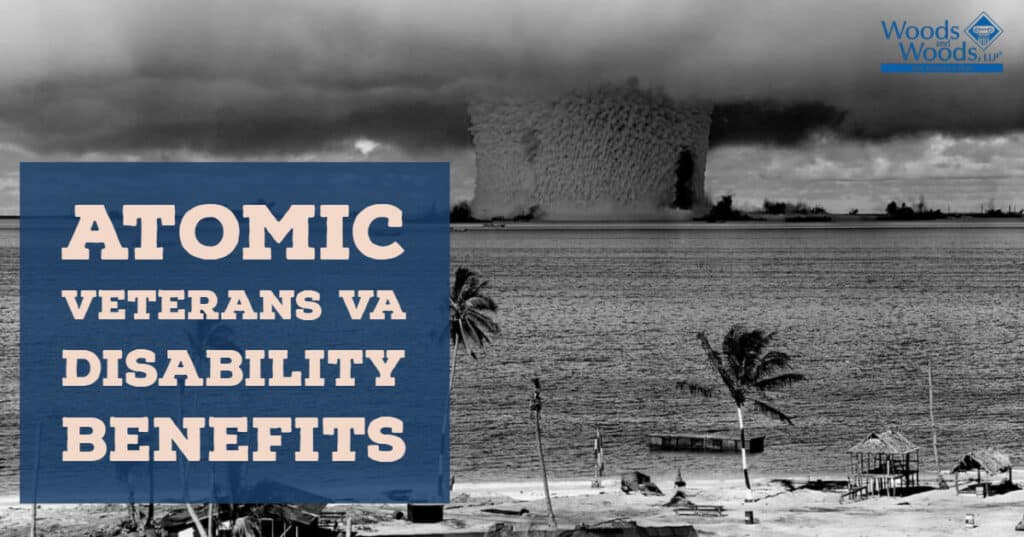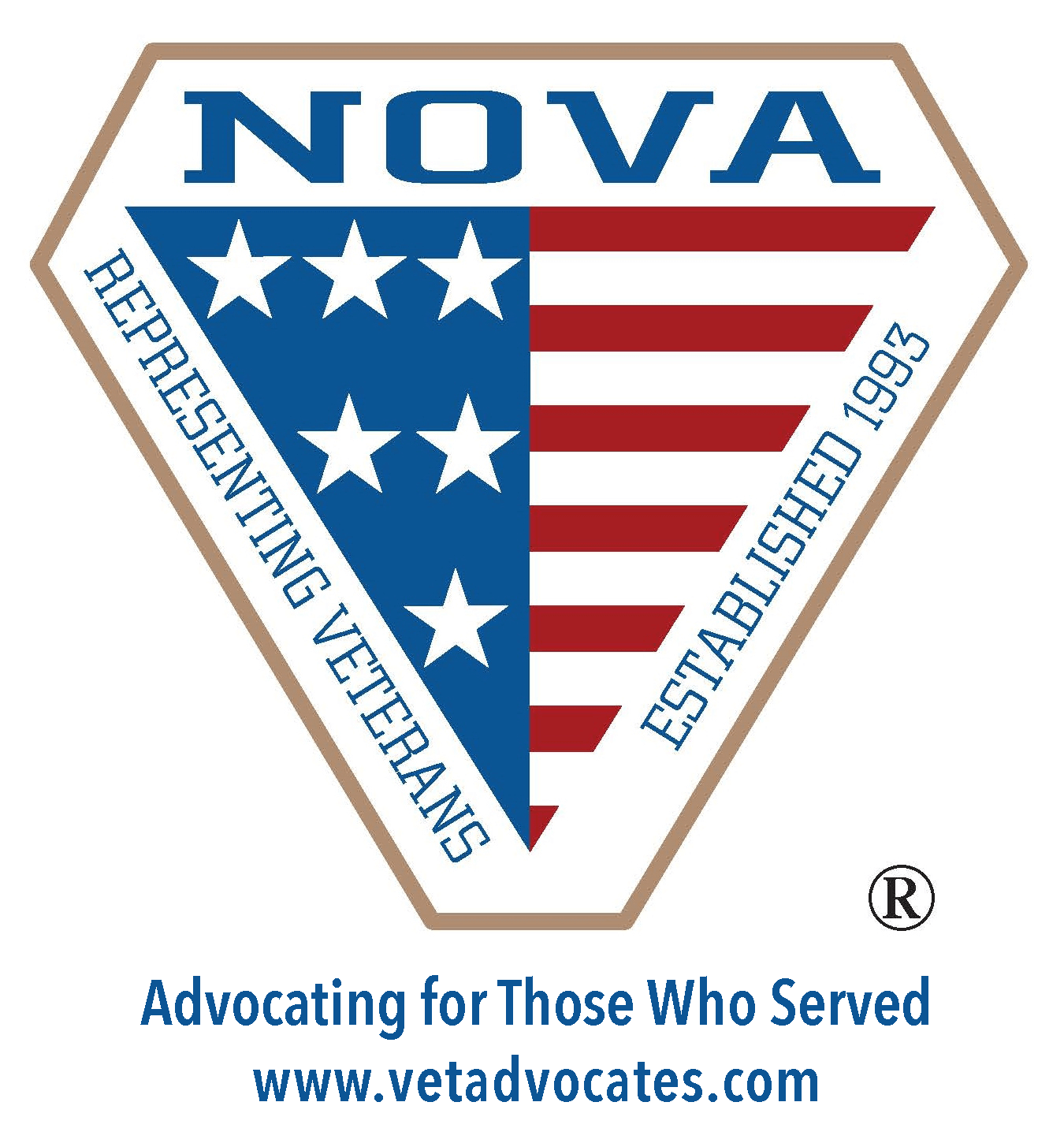Atomic veterans are those veterans who were exposed to ionizing radiation from waste, weapons, or equipment while in the military. If you served in an area that had radioactive materials and developed symptoms of radiation-related illnesses, you may be considered an atomic veteran eligible for VA disability benefits.
Talk to Us About Your Claim:
(866) 232-5777
In this article about VA benefits for atomic veterans
Who does the VA consider an atomic veteran?
The VA considers an atomic veteran to be a veteran who, as part of their military service:
- Participated in atmospheric and certain underground nuclear tests
- Took part in the American occupation of Hiroshima and Nagasaki, Japan between Aug. 6, 1945, and July 1, 1946
- Was a POW in or near Hiroshima and Nagasaki
- Served at gaseous diffusion plants in Paducah, Kentucky; Portsmouth, Ohio; and area K25 at Oak Ridge, Tennessee, for at least 250 days before Feb. 1, 1992
- Participated in the cleanup of nuclear testing sites at Enewetak Atoll between Jan. 1, 1977, and Dec. 31, 1980
- Responded to the clean-up effort in Palomares, Spain, between Jan. 17, 1966, and March 31, 1967, after the collision of planes carrying thermonuclear weapons
- Responded to the clean-up effort at Thule Air Force Base in Greenland between Jan. 21, 1968, and Sept. 25, 1968, after a B-52 bomber carrying nuclear weapons crashed
Proving you are an atomic veteran
Your military records describing when and where you served can help prove you are an atomic veteran. It is the VA’s responsibility to reach out to the DoD about gathering and sending over records regarding your service and exposure. You do not need to confirm your radiation exposure before applying for benefits. The same is true for eligible surviving spouses or dependents applying for survivor’s benefits.
Photo evidence and buddy or lay statements can help prove you are an atomic veteran, especially if any records related to your service have been lost or destroyed.

What radiation-related illnesses qualify for VA disability benefits?
There are a variety of medical conditions linked to ionizing radiation exposure. The VA recognizes certain conditions as presumptive, while others are considered on a case-by-case basis.
Presumptive conditions
In presumptive cases, the VA already acknowledges that certain disabilities are service connected if you can prove that you were in a specific place during a given time. If you have one or more presumptive conditions, you do not have to prove they were caused or aggravated by your time in the military with a medical nexus.
Presumptive conditions for ionizing radiation exposure:
- Cancers of the bile ducts, bone, brain, breast, colon, esophagus, gall bladder, pancreas, pharynx, ovary, salivary gland, small intestine, stomach, or thyroid
- Liver cancer (primary site, but not if cirrhosis or hepatitis B is indicated)
- Lung cancer (including bronchiolo-alveolar cancer)
- Urinary tract cancer (kidney/renal, pelvis, urinary bladder, and urethra)
- Leukemia (except chronic lymphocytic leukemia)
- Lymphomas (except Hodgkin’s disease)
- Multiple myeloma (cancer of plasma cells)
Nonpresumptive conditions
Nonpresumptive conditions are other diseases associated with ionizing radiation exposure and possibly caused by that exposure, but without an automatic presumed link. These conditions are considered on a case-by-case basis and need supporting medical evidence to prove they are service connected.
The list of other diseases associated with ionizing radiation exposure:
- All cancers
- Non-malignant thyroid nodular disease
- Parathyroid adenoma
- Posterior subcapsular cataracts
- Tumors of the brain and central nervous system
Atomic veterans and cancer
Military radiation testing has been connected to a long list of cancers. Bile duct cancer and other liver cancers can take a long time to show up. Bone cancers, pancreatic cancer, and cancers of the mouth, throat, and digestive system are also diseases that can show up decades after radiation exposure.
Radiation exposure can also cause various kinds of lung cancer. Dozens of nuclear tests happened at ground level or in the sky. These atmospheric nuclear tests spread waste for hundreds of miles. Rescue teams also breathed in radioactive materials as well as the engineers designing nuclear bombs. Any of these forms of contact increased the risk for lung cancer.
Additional support for atomic veterans
There are other resources for atomic veterans seeking support. There is an organization called the National Association of Atomic Veterans (NAAV) that works to provide support and communication. They helped lobby for the Radiation Exposure Compensation Act. The government is now working to helping veterans and their families that were victims of forced exposure, and joining these lists helps you stay informed on what new laws are passed for this group.
The Atomic Veterans Service Certificate was created in 2019. You can find out how to apply for it here. As you get your materials together to apply for the AVSC, making copies of everything can help you have what’s needed if you choose to file a VA disability claim.
Talk to Us About Your Claim:
(866) 232-5777
FREQUENTLY ASKED QUESTIONS
Your military records describing when and where you served can help prove you are an atomic veteran. It is the VA’s responsibility to reach out to the DoD about gathering and sending over records regarding your service and exposure. If records have been destroyed, buddy statements and photographs can help support your claim.
Cancers of the bile ducts, bone, brain, breast, colon, esophagus, gall bladder, pancreas, pharynx, ovary, salivary gland, small intestine, stomach, or thyroid
Live cancer (primary site, but not if cirrhosis or hepatitis B is indicated)
Lung cancer (including bronchiolo-alveolar cancer)
Urinary tract cancer (kidney/renal, pelvis, urinary bladder, and urethra)
Leukemia (except chronic lymphocytic leukemia)
Lymphomas (except Hodgkin’s disease)
Multiple myeloma (cancer of plasma cells)


